Home Hi-Tech Android World ,,,,,For almost two years Blaze was Fitbit's first smartwatch, but the company has always formally specified that Blaze was a smartband with a large color display, ahead of the arrival of Ionic, the first real model to be presented to the public that such, or a Smatwatch proper.
In fact, as we have been able to see through our test that you are going to read, the difference compared to the predecessor is felt. While Blaze was interesting but did not have the numbers to duel with Apple Watch, Ionic instead has all the weapons in their place, plus the possibility of being used on multiple platforms (even non-mobile) and with access to Fitbit community which has always been a plus for the company.
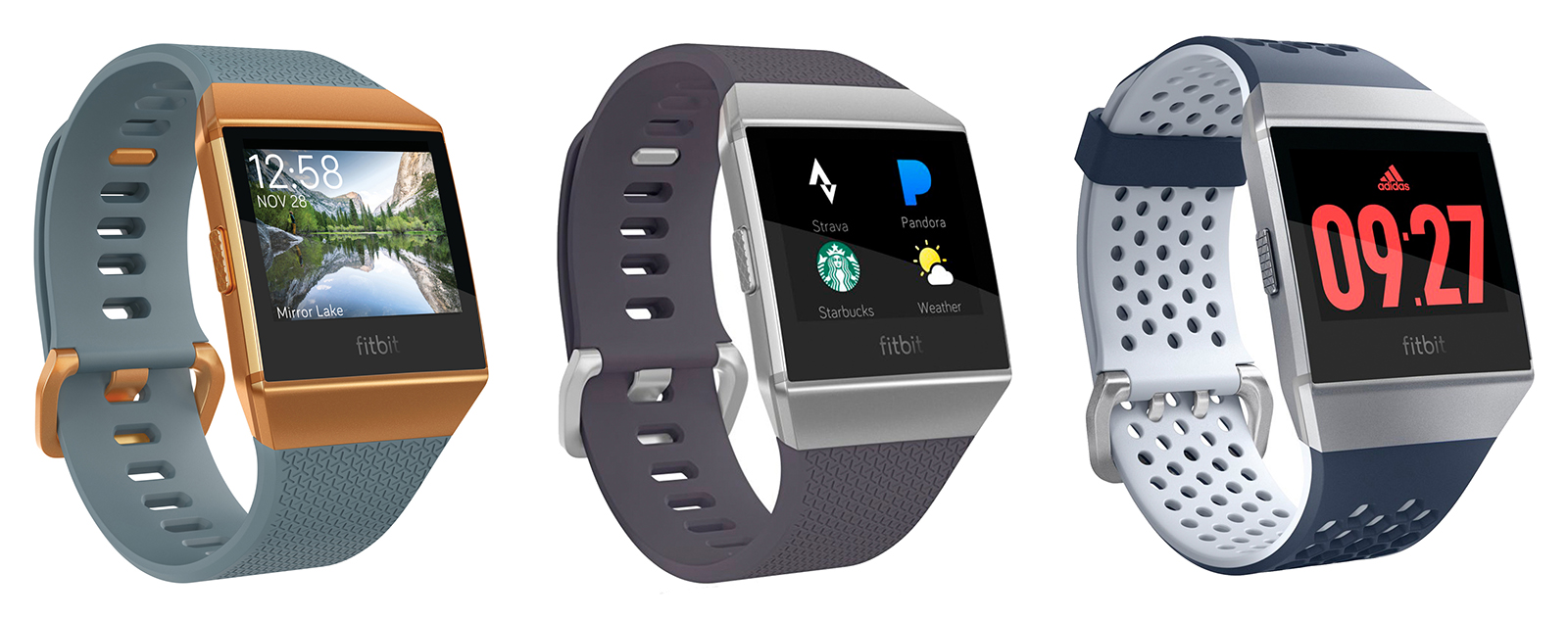 The colors initially planned by Fitibit for Ionic, the Adidas one will probably arrive in January
The colors initially planned by Fitibit for Ionic, the Adidas one will probably arrive in January
Ionic, the chosen one
The importance of Ionic for Fitbit is enormous, because after the fury of smartbands, the market begins to look more and more to smartwatches for all uses, including those of tracking daily activity (in which Fitbit has always been at vanguard).
The relevance that the American company assigns to the new product can already be seen from the box, which presents the model in a refined and meticulous way, even if inside it substantially resides only the watch with a strap already attached and a second smaller one to change. on the fly (based on wrist size) and of course the charging cable with proprietary connector, a reprehensible trend. unfortunately shared by all models on the market.

Once the device was unpacked (with a charge close to 50%, in our case) we proceeded to synchronize, first with an Android smartphone (a Moto Z2 Play, here our review) and then with an iPhone 7. The phase synchronization is guided within the app by simple screens that introduce the various functions, and it is a phase absolutely within everyone's reach. In both configurations, Android and iPhone, we obtained substantially similar results, even if in the case of the iPhone the use of Bluetooth is much better.
The auxiliary functions of the smartwatch can be examined later, without haste, while the “sync” phase lasts no more than a few minutes. A firmware update may also be required which would lengthen in time. Even in this case, however, the operation was carried out in a completely automatic way after the user's consent.
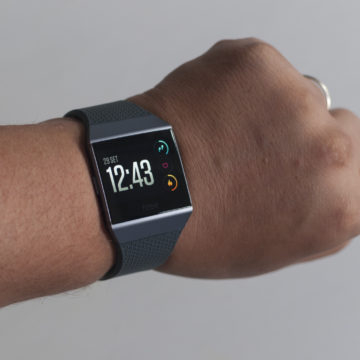
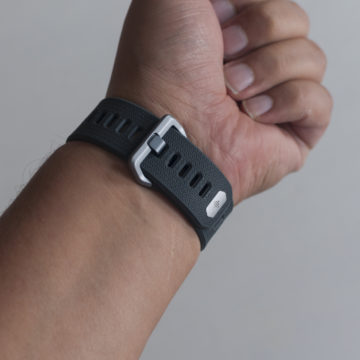
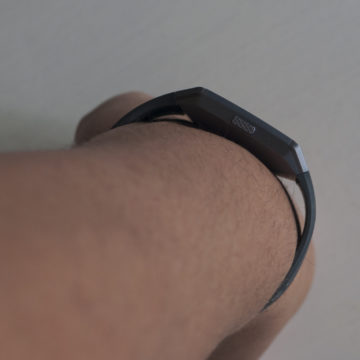
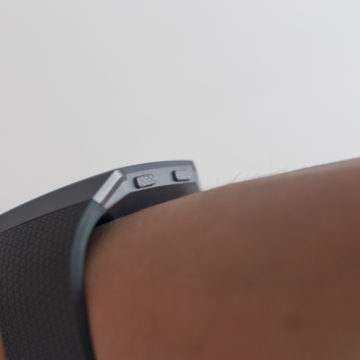
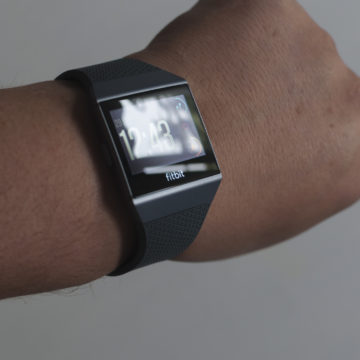
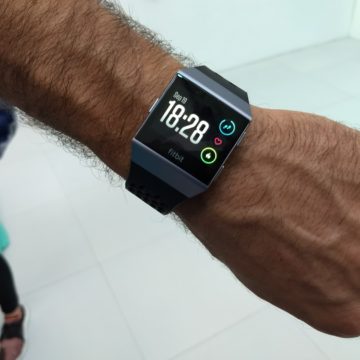
First contact
To also try Fitbit Pay, which we will discuss more extensively in a moment, we added a credit card to the Ionic's virtual “wallet”, and consequently created a four-digit password: this password is required every time we remove the smartwatch and every time that we activate the display if the smartwatch is not worn, a form of additional security for a device that can give access to our current account.
Aesthetically we are faced with a product with an austere design, which gives little to frills, but presents itself adequately on the wrist. The design is reminiscent of the latest Fitbit products such as Alta and Charge 2, although the larger display has prompted bold choices. The strap we used is made of dark rubber, but if you are looking for customization, there is no shortage of accessories in this case. As is Fitbit tradition, since it is easy to disassemble the strap and change it by resorting to third parties.
It should be noted that in the back of the strap, which is hooked in a classic way, there is a safety button to prevent the release on the fly, a classic of the metro and tram.

The display, on the other hand, whose appearance and functions are also born from the know-how that Fitbit inherited from Pebble (here our notes), is very bright, with bright colors and clearly visible in all situations. The shape is rectangular, with the lower part marked by the trademark reported clearly.
Finally, on the back, there are heart rate sensors and for continuous monitoring of blood sugar (in collaboration with Dexcom, but not yet active). The feeling it transmits to the wrist is very good: in the photo the design actually seemed too “flat” and so it was when we saw it for the first time, but then live and after constant use, the design appears much more natural and above all it looks good once worn, both during physical activity and in everyday situations and rest.
During the test, the battery impressed us: without ever turning on the GPS (therefore without specific physical activities) the smartwatch lasts more than the four days announced by Fitbit, which makes it ideal for measuring sleep, an activity carried out in a sophisticated way, thanks to the technology introduced with Alta HR and then also inherited on Charge 2.
On the other hand, the consumption by the GPS is considerable, as in all the devices on the market: running for about 37 minutes with the Always On display (activated manually) we consumed 20% of the battery.
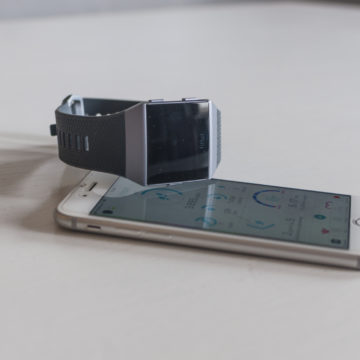
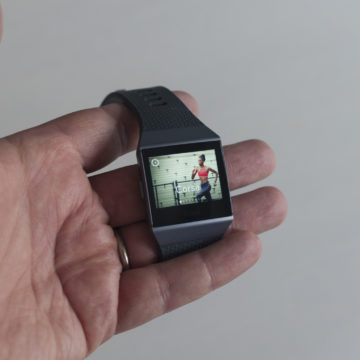
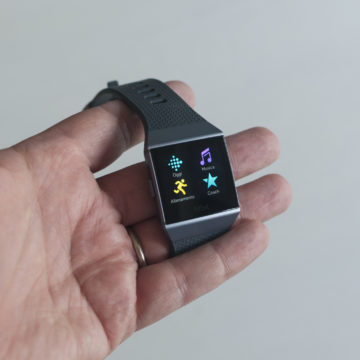
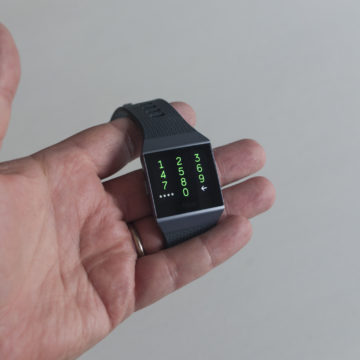
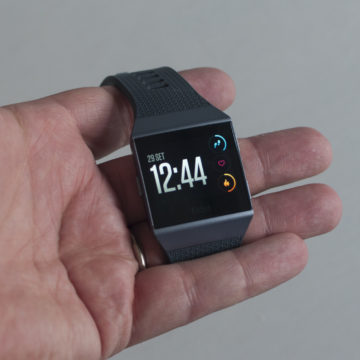

Sensors
Speaking of sensors, if we want to put it on the floor to those who have more, here Ionic probably has its say: the heart rate sensor, GPS, sensor for blood glucose control are included in the smartwatch (at the time of the test, we reiterate it, disabled) and gyroscope, practically everything a smartwatch can have today, including of course the ubiquitous Bluetooth and Wi-Fi.
But the point is not so much the number of sensors, but the software that controls them and the functions available to the user: thanks to the four days of autonomy, Ionic is able to measure the instant heartbeat but also at rest, a value considered very important because it is more reliable to measure health, during activity (to understand if you can push again or maybe save yourself a little) and even at night, a frontier so far more than anything else snubbed by the most common smartwatches due to reduced autonomy, enhanced instead in smartbands.
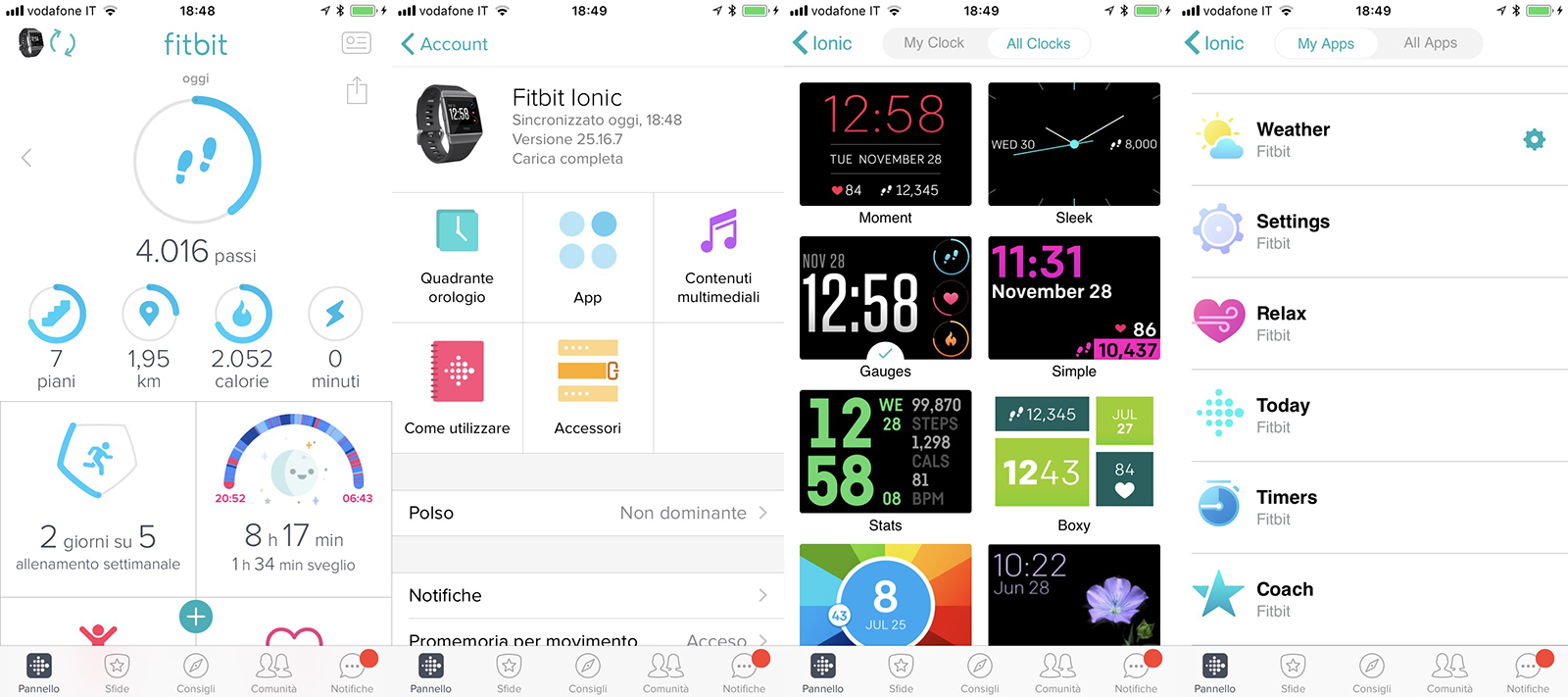
The GPS, which takes a few seconds to capture the signal, is very accurate: the technical notes state that the accuracy has been increased compared to, for example, the Surge. In our case, the Fitbit Ionic was also able to detect lane changes while running on the street.
As for the beat sensor, the results are on average the same as for other detectors with which we have compared it; remember that the heart rate sensor on the wrist is naturally less accurate than a proprietary sensor connected to the rib cage.
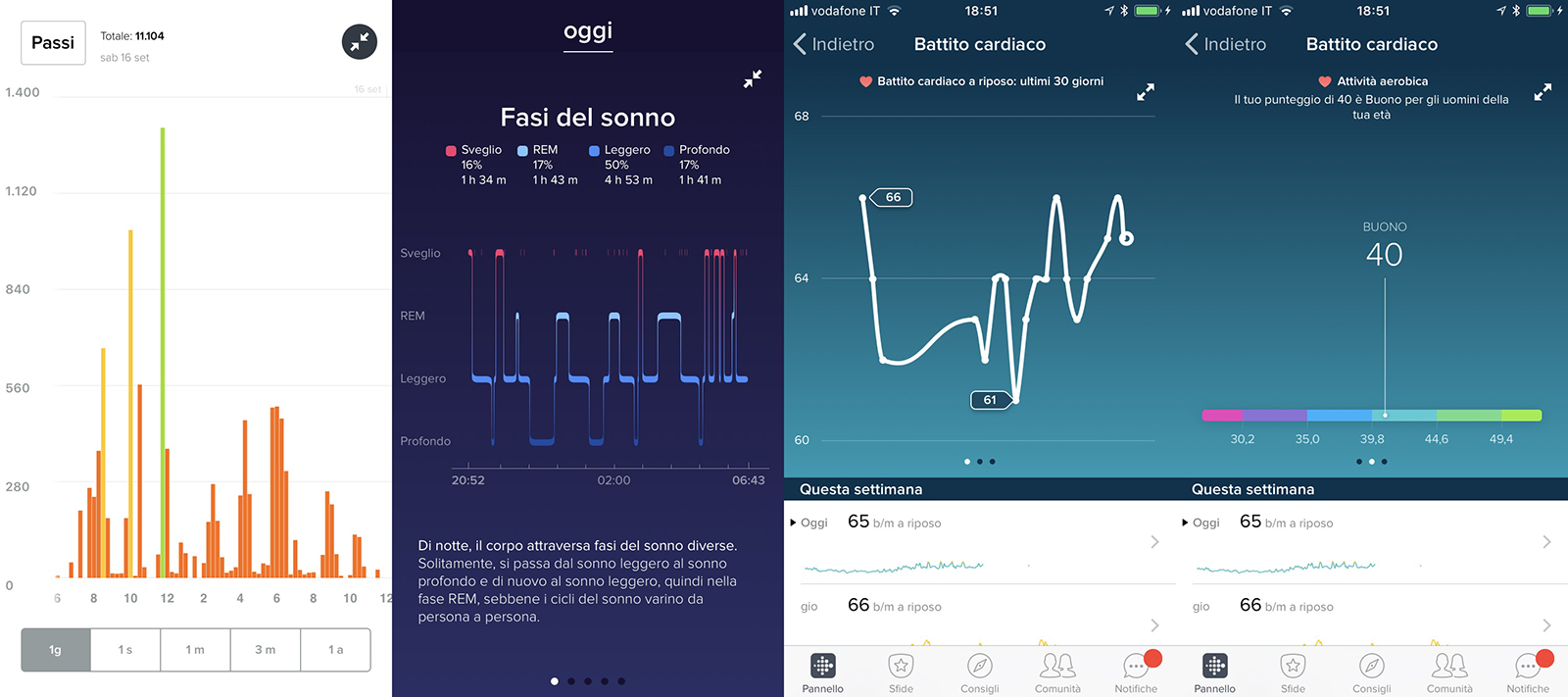
Music maestro
Fitbit's task, it is clear, is not only to be a faithful companion of your smartphone, but also to replace it in some tasks: during physical activity, in the pool, at night, all the moments in which use phone is inconvenient or impossible.
But if Ionic is independent for night measurement, for sport (on land or in the pool) it uses a companion, in this case a pair of Bluetooth headphones: with the presentation of Ionic the new Fitbit Flyer were also announced, which here at Cyber Layman we will examine in detail later, while it is possible to use any Bluetooth headset on the market (and in fact we used these in our tests). Yes, because thanks to the internal space of 2.5 GB of Flash memory, it is possible to synchronize hundreds of MP3 songs and listen to them during the activity, without having to call your smartphone for help (which can remain in the bag, even off).
Here, however, we must specify that this function has a double face: we liked the ease with which we synchronized the headphones and listened to the music during the activity (the player can be easily recalled with a scroll) so much we did not like the phase of Sync with Mac, complex and too slow.
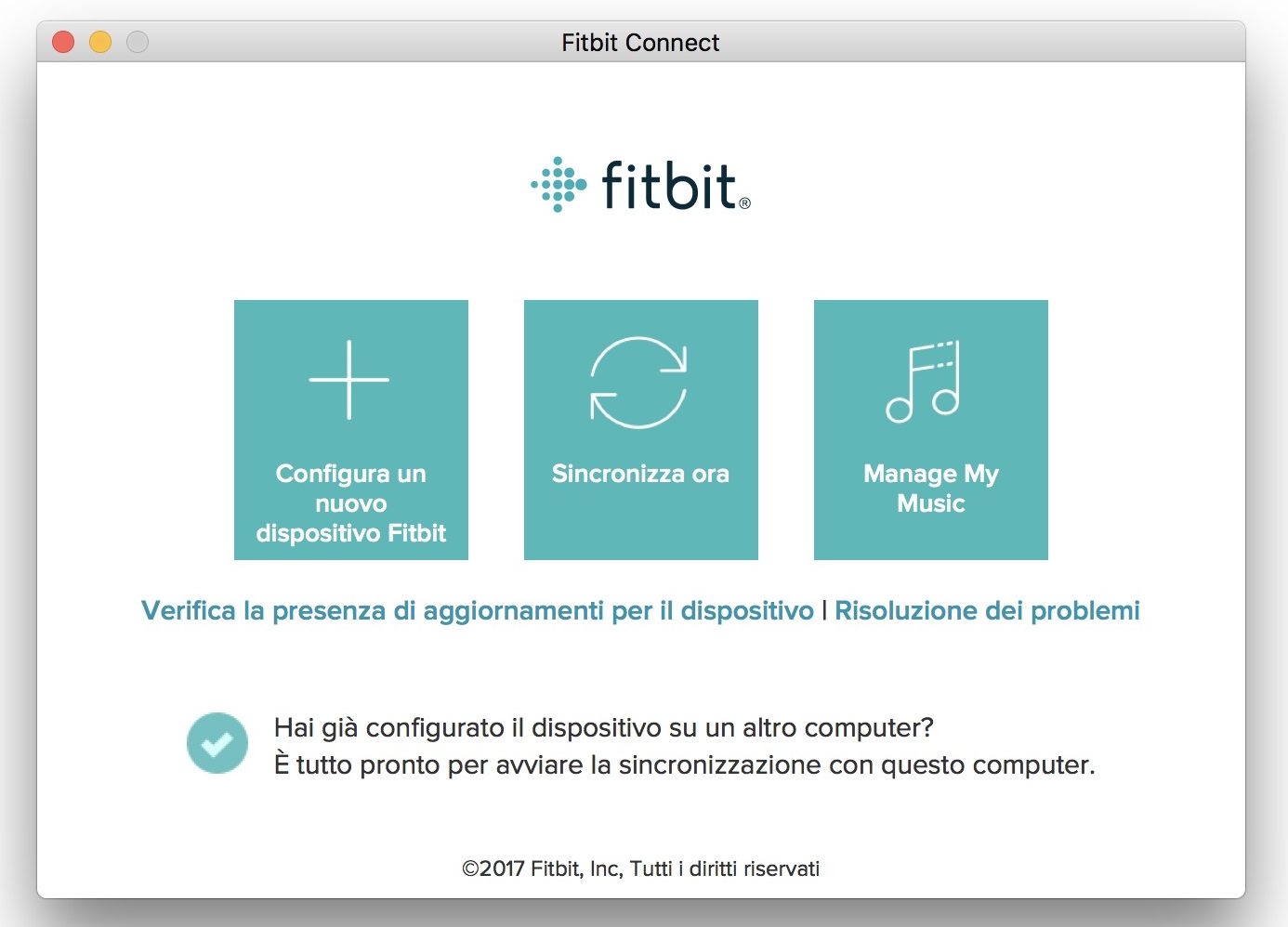
The process, which is based on an iTunes playlist, uses the watch's Wi-Fi to transport songs from the computer to internal memory, which appears to be unnecessarily slow. Given the charging cable, perhaps it would have been better to opt for a synchronization via USB, certainly faster and more practical. Moreover, the same procedure, performed as a test on Windows, was simpler, also thanks to the more accurate App.
But in the face of a Mac app that in our opinion needs more attention, Fitbit is to be commended for creating one of the very few truly cross-platform smartwatches that for most functions works a lot on iOS (including iPad, difference not to be). little) as on Android (smartphones and tablets), but also on Mac and Windows, an advantage for all those who have decided to take a step back with smartphones (with models like this, for example).
Always following this trend, it is a point in Fitbit's favor to be able to check the trend of all the parameters captured by Ionic and also by the other bracelets in the Fitbit portal which, we remind you, does not share data with Health or Google Fit. The portal, which can be consulted via browser, is complete and flexible, certainly much more comfortable than any app, even if that of Fitbit has grown a lot in the last two years.
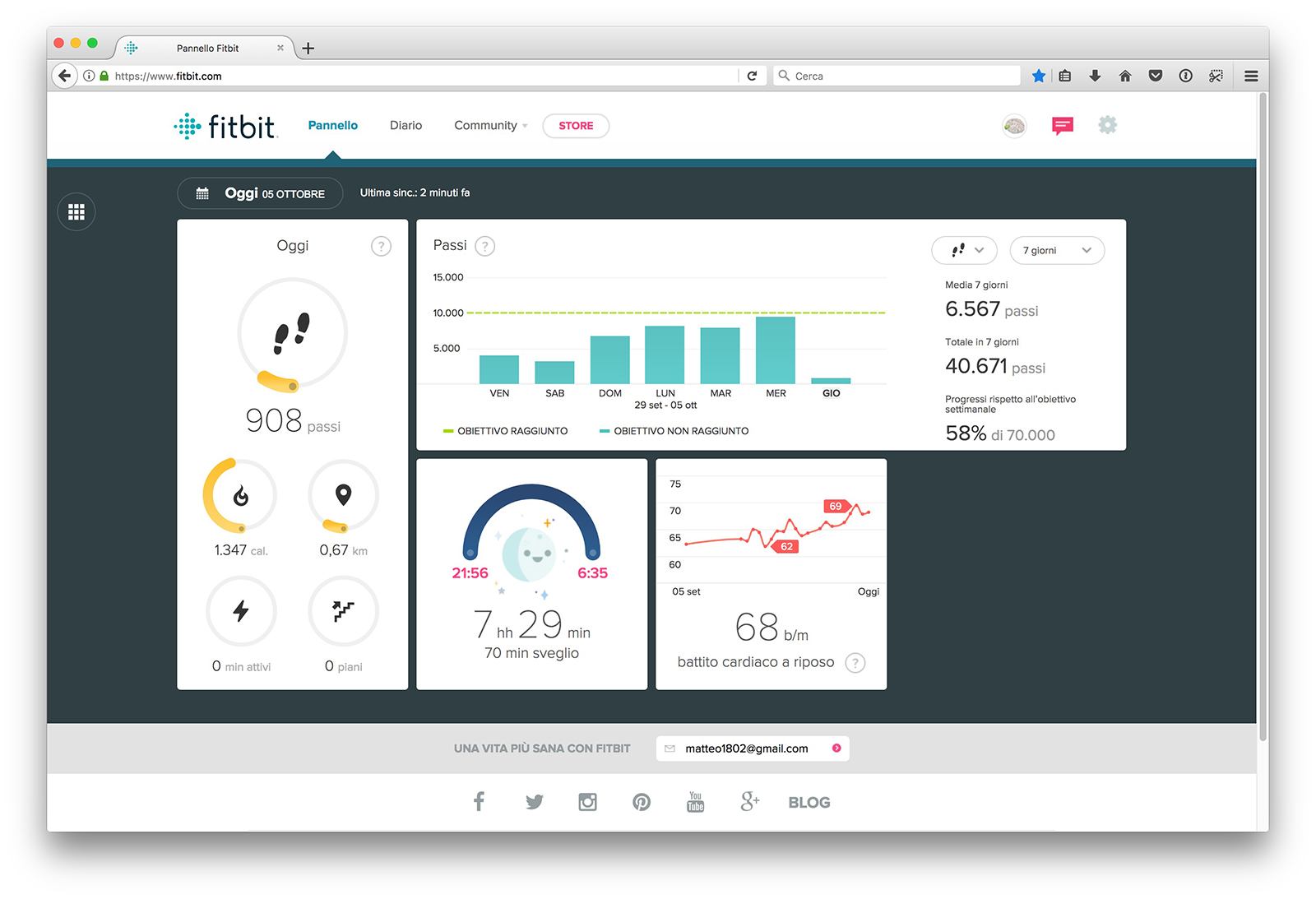 The Fitbit portal, where you can consult your data and results more conveniently than from the App
The Fitbit portal, where you can consult your data and results more conveniently than from the App
A wrist loosener
Ionic can be considered the first true Fitibit smartwatch also due to the fact that for the first time it transmits notifications of all apps, not only, such as smartbands, SMS and calendar. This means it is a true extension of the phone. But the point is that Ionic is not just a smartwatch, it is a Fitibit smartwatch, which means that it has a whole series of specific functions for sport and physical well-being: functions that on the one hand include those already seen in smartbands. more advanced, such as Charge 2 and Alta HR, on the other hand some exclusive ones, derived from Fitstar, acquired by Fitbit a couple of years ago.
In Fitbit Ionic, activities are very important. In fact, they have the privilege of being the first Apps you see by scrolling the screen: among these there are entire sport sessions in complete autonomy, designed to be performed alone in the living room or in the gym. The exercises are very well illustrated on the display with simple videos and then actively monitored, with short vibrations that tell you when to stop and rest and when to resume.
The attention to sport is also given by the presence of music, saved on the device and listened to via Bluetooth headphones and to the GPS sensor which in the case of sport activates and records all movements, synchronized at the end with the app in a silent way. But not only Sport: in Fitbit Ionic there are also alerts for relaxation, with breathing exercises (already seen on the bracelets) that optimize your biorhythm and help you focus.
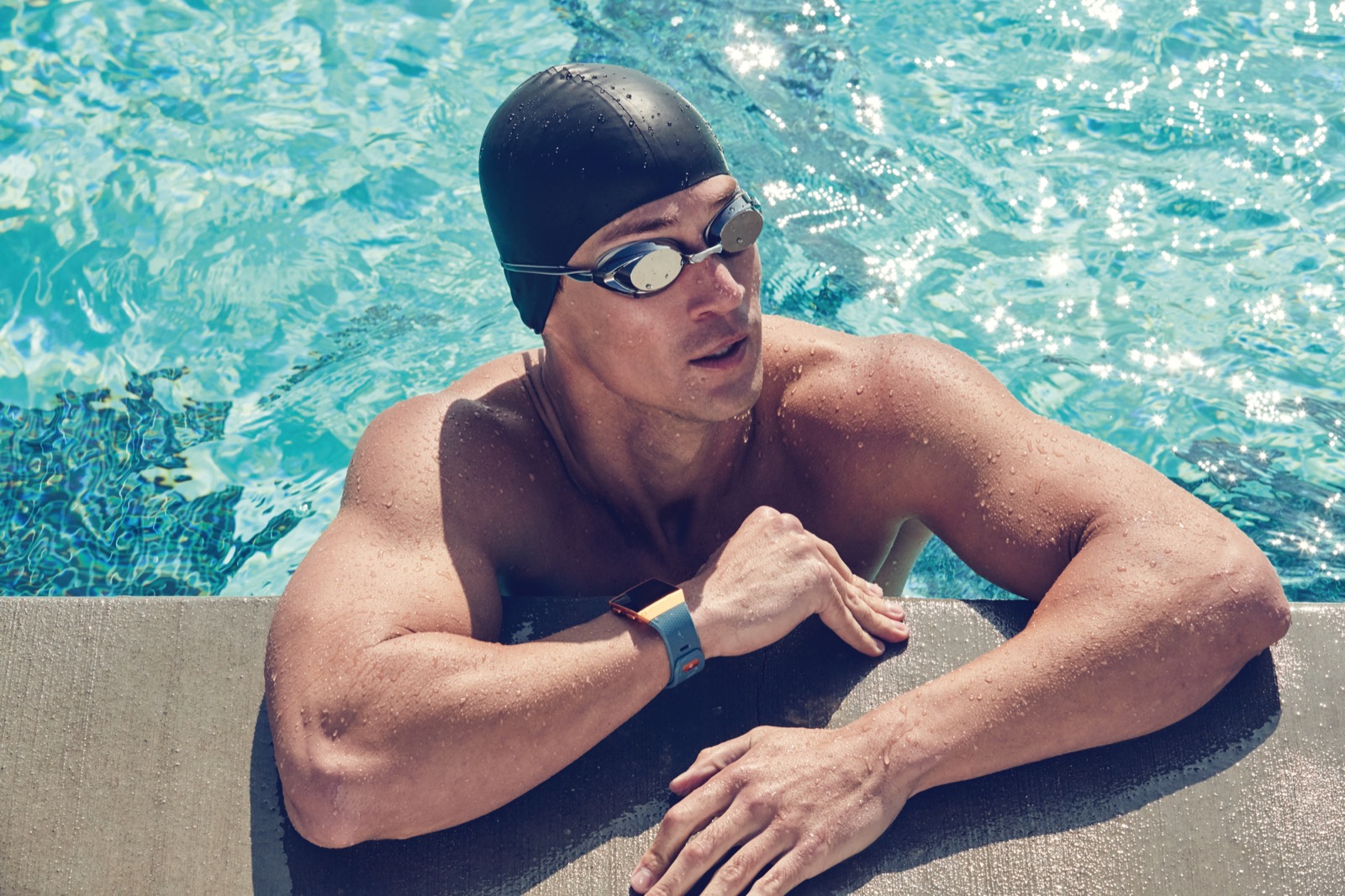 Not only is the Ionic scuba diver, but it also has special programs for swimming
Not only is the Ionic scuba diver, but it also has special programs for swimming
Fitbit Pay
During the trial we also got to try Fitbit Pay, the new Contactless payment system that the company has prepared just in time for launch, currently limited to Ionic only, but which will likely be available in all future products.
The process is very simple, just digitally link a credit card to your account and in a flash the terminal is ready to make payments via contactless.
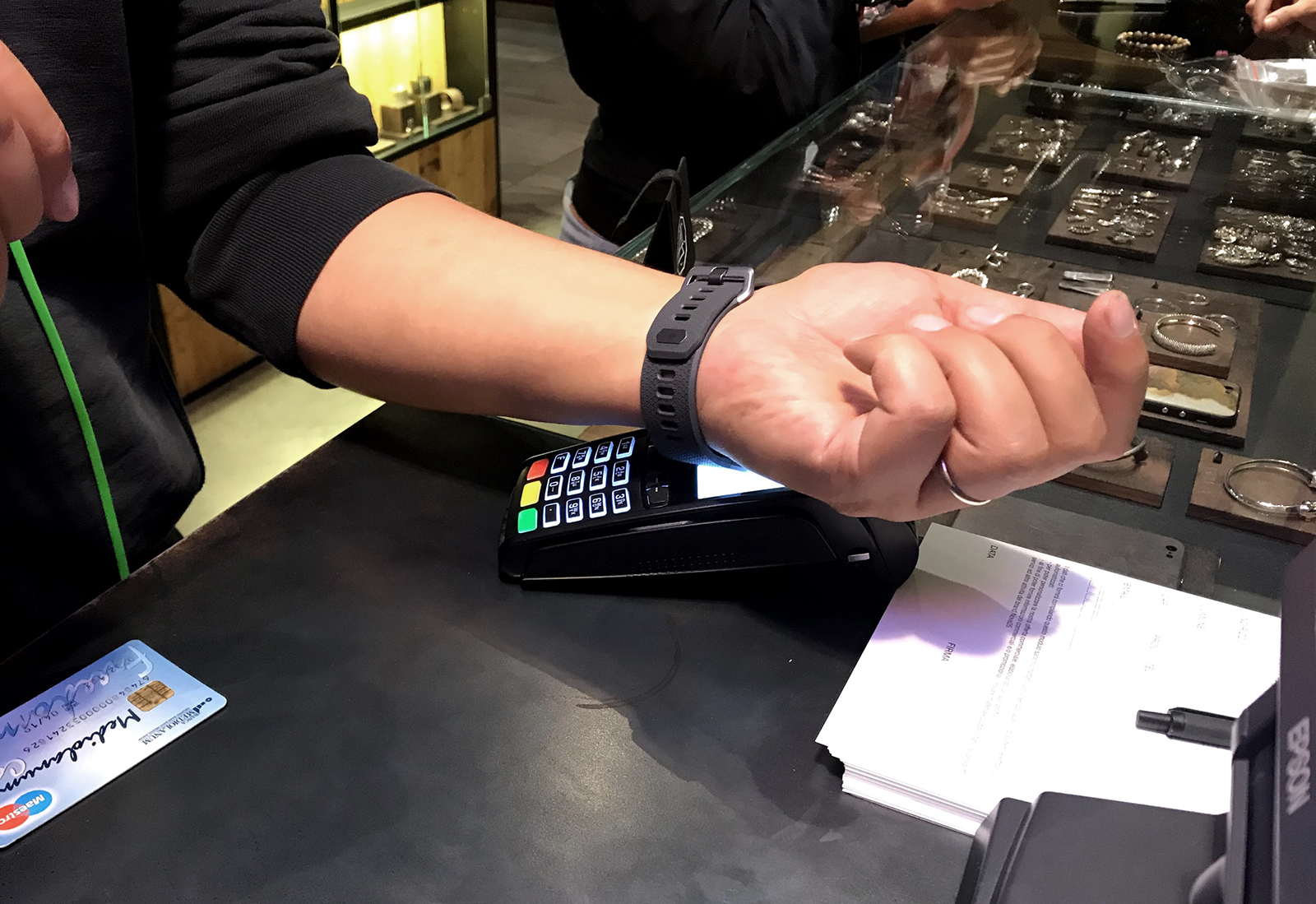 Payment with Ionic, made in a shop in Milan
Payment with Ionic, made in a shop in Milan
At the time of writing, Fitbit is active in Italy and is entering into agreements with several banks, although at the moment there have been no specific announcements: we carried out the test in a McDonald's and in a store in Milan and everything worked correctly, it is it was enough to bring the watch close to the sensor and the transaction took place, like any credit card.
Probably when you read these lines everything has already been started not only formally but also concretely for which one or more banks have already been enabled: the official position of the brand is that “Fitbit Pay from October (2108) will be formally active but local agreements will follow timing depending on the speed of the banks to join”.
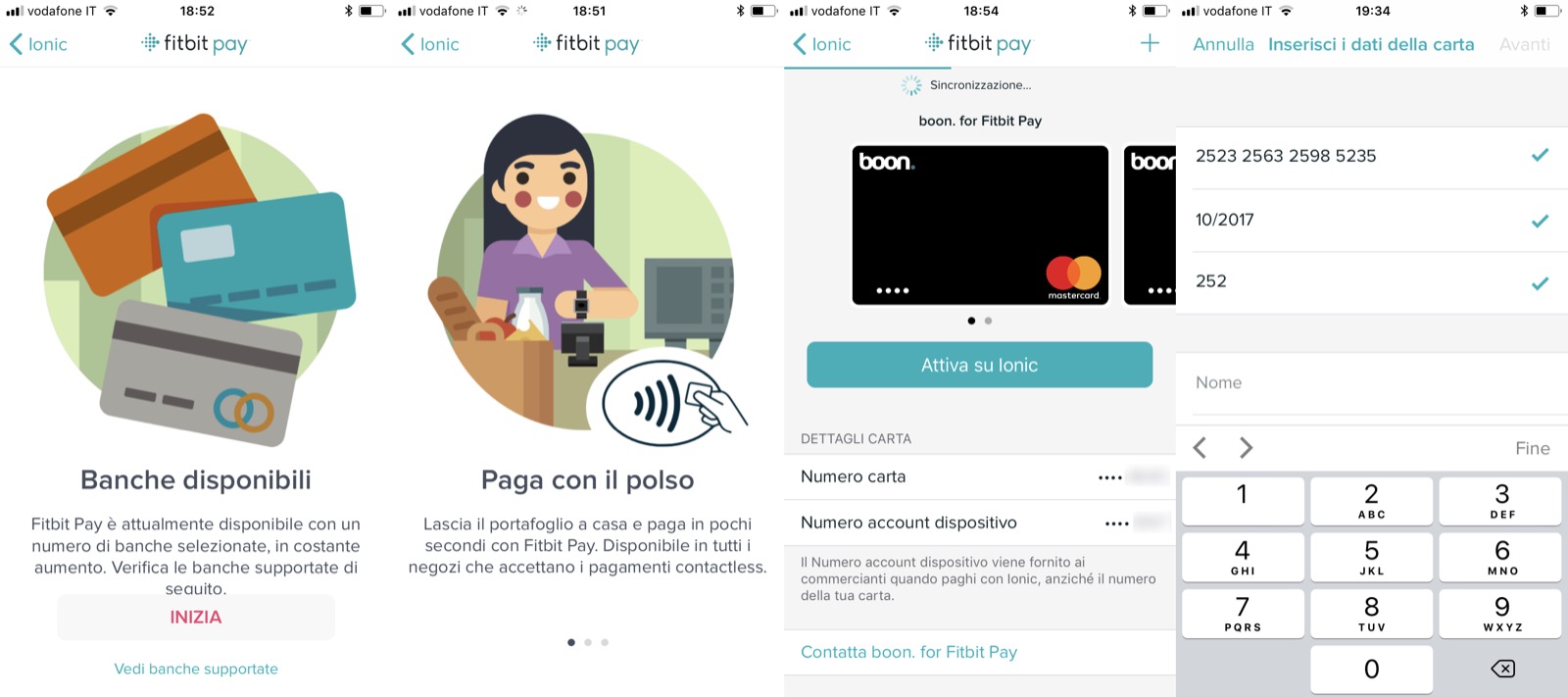 The process of inserting a credit card into the Fitbit Ionic Wallet
The process of inserting a credit card into the Fitbit Ionic Wallet
Final thoughts
The overall opinion on Fitbit Ionic is decidedly poisitive, so much so that to those who write these lines the smartwatch seems, to date, the most valid competitor to counter the dominance of Apple Watch on the market (here you can find our review of Apple Watch 4), for power, shape, capacity and price range, although Ionic has the benefit of being used also on the Android platform and offers a range of up to 4 days, very interesting.
The attitude to movement and sport, not competitive, is one of the aspects that emerge above all others, but Ionic performed very well in all situations, sports, daily and work. The potential is all there, the community is strong and present, and the cost, considering the characteristics, is fully in line with the market: if it is a success we will see it shortly, because Christmas is upon us, but from the point of view technical performance is impeccable.
Pro :
Against:
List price: 349.95 Euro. All Fitbit products are distributed by Attiva, and are available in the best consumer electronics stores in the peninsula, but you can also find them online on Amazon where it comes from offered only for 10 December at 199.00 Euro (December 2018)
,,





